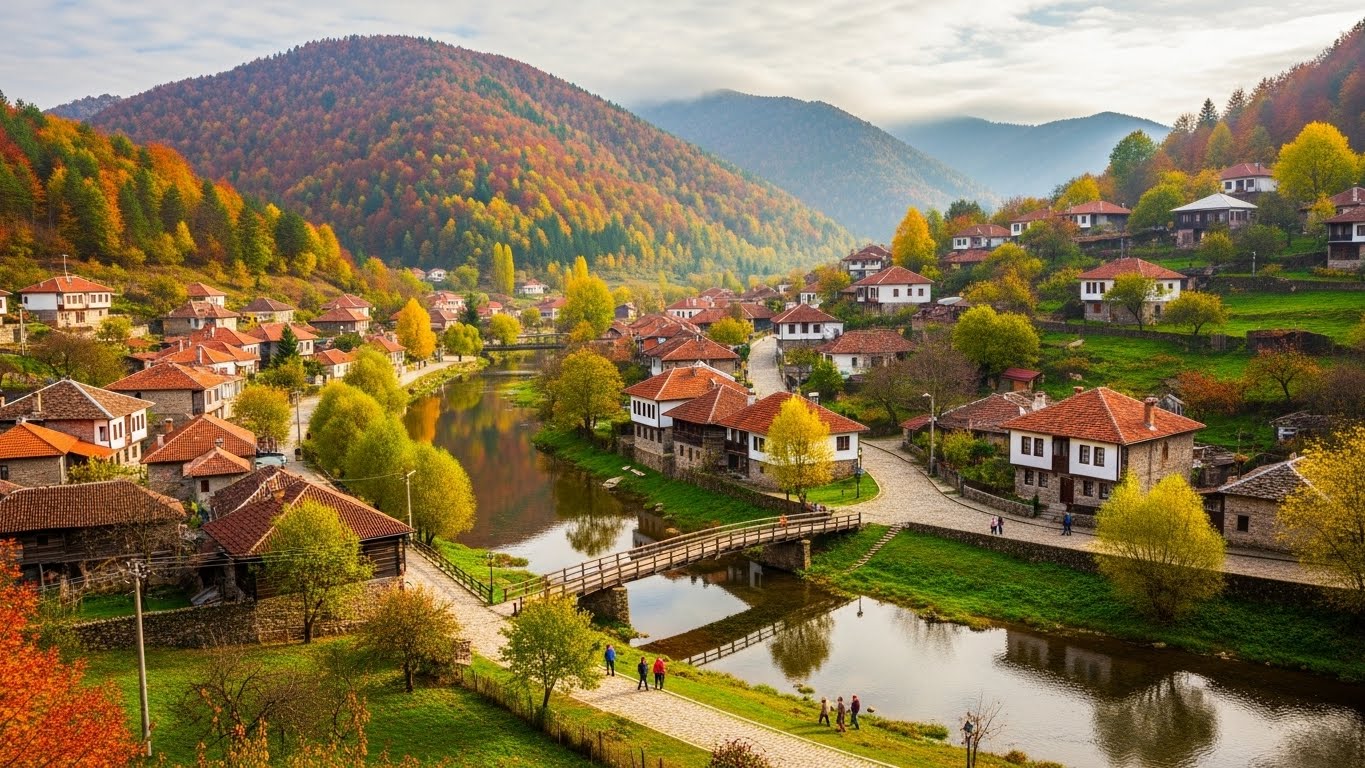Archives
Tsunami Warning: Everything You Need to Know to Stay Safe

Natural disasters often come without warning, but in the case of a tsunami warning, timely alerts can save lives. Tsunamis are powerful and potentially devastating waves caused by underwater earthquakes, landslides, or volcanic eruptions. When a tsunami is triggered, coastal areas can be struck within minutes to hours, making early warnings crucial.
This article will cover the meaning of a tsunami warning, how tsunami detection systems work, and what actions you should take to protect yourself and your loved ones.
What Is a Tsunami Warning?
A tsunami warning is an alert issued by meteorological and geological agencies to inform the public that a tsunami with the potential to cause widespread damage is imminent or already occurring. This warning typically follows seismic activity and is based on scientific data collected from earthquake monitoring systems and ocean buoys.
Tsunami warnings are part of a larger alert system that may also include:
-
Tsunami Watch: Indicates a potential for a tsunami, but confirmation is pending.
-
Tsunami Advisory: Suggests strong currents and potential coastal hazards but not necessarily major flooding.
-
Tsunami Information Statement: Provides information about an earthquake that has occurred but is unlikely to cause a tsunami.
How Are Tsunami Warnings Issued?
Tsunami warnings are the result of real-time monitoring and advanced data modeling. Several key components contribute to the issuance of a tsunami warning:
1. Seismic Activity Monitoring
Earthquake sensors, including seismographs, detect underwater tremors. If the magnitude is significant—usually 7.0 or higher—it could trigger a tsunami.
2. Deep-Ocean Assessment and Reporting of Tsunamis (DART) Systems
DART buoys placed in the ocean collect sea-level data and transmit it via satellite. A sudden change in water pressure indicates the possibility of a tsunami wave.
3. Computer Modeling
Scientists use models to predict wave arrival times, heights, and impact zones based on earthquake and buoy data. This modeling helps in issuing precise tsunami warnings.
4. Global and Regional Alert Centers
Agencies like the Pacific Tsunami Warning Center (PTWC) and national meteorological departments are responsible for disseminating alerts through radio, TV, apps, and sirens.
Why Tsunami Warnings Are Critical
The main purpose of a tsunami warning is public safety. Tsunamis can travel at speeds exceeding 500 mph in deep water and slow down as they approach shorelines—amplifying their height and destructive potential.
A well-communicated tsunami warning enables people to evacuate coastal zones, minimize injuries, and reduce loss of life. Delayed or missed warnings can lead to catastrophic consequences, as witnessed in past events like:
-
The 2004 Indian Ocean tsunami, which killed over 230,000 people.
-
The 2011 Japan tsunami, which caused nearly 20,000 deaths and a nuclear disaster.
What to Do When a Tsunami Warning Is Issued
If a tsunami warning is issued in your area, follow these steps immediately:
1. Evacuate Inland
Move to higher ground away from the coast. Avoid bridges and low-lying areas.
2. Turn On Emergency Alerts
Use your phone or a battery-powered radio to receive real-time updates.
3. Avoid the Coast
Do not go to the beach to watch the waves. Tsunamis may include multiple surges and appear as fast-rising tides or massive waves.
4. Follow Official Instructions
Authorities will provide guidance on safe zones and emergency shelters. Obey all evacuation orders without hesitation.
How to Prepare Before a Tsunami Warning
Preparedness is key to surviving a tsunami. Here are proactive measures:
Create an Emergency Kit
Include water, non-perishable food, a flashlight, batteries, a first aid kit, and important documents.
Know Your Evacuation Route
Identify escape routes and high ground in your area.
Educate Your Family
Practice evacuation drills and explain the importance of responding quickly to a tsunami warning.
Stay Informed
Sign up for text alerts from national weather or disaster management services.
Tsunami Warning Systems Around the World
Different countries have specialized systems based on their geography and technological resources.
Pacific Tsunami Warning Center (PTWC)
Based in Hawaii, PTWC monitors seismic activity and issues tsunami warnings for the Pacific Ocean.
Indian Ocean Tsunami Warning System
Established after the 2004 disaster, this system coordinates multiple countries for quick alerts.
Japan Meteorological Agency (JMA)
Japan’s system uses underwater sensors and public sirens for real-time tsunami warnings.
Common Myths About Tsunami Warnings
Despite increasing awareness, some misconceptions still exist:
Myth 1: Tsunamis Look Like Surf Waves
Reality: They often appear as rapidly rising tides or walls of water.
Myth 2: All Earthquakes Cause Tsunamis
Reality: Only undersea or near-shore earthquakes of significant magnitude are potential triggers.
Myth 3: Once the First Wave Passes, It’s Safe
Reality: Multiple waves can strike over hours, often the second or third being more destructive.
Conclusion: Take Every Tsunami Warning Seriously
A tsunami warning is not just a routine alert—it’s a life-saving message. With the proper knowledge, quick response, and preparation, you can significantly reduce the risks posed by tsunamis. Whether you live in a coastal region or travel often to such areas, understanding tsunami warning systems and emergency protocols is vital for survival.
Archives
Mebalovo: Unveiling the Charm of This Enchanting Village

Nestled in the heart of Russia, Mebalovo is a hidden gem that beckons travelers seeking an authentic experience. This enchanting village boasts picturesque landscapes, rich history, and vibrant culture. As you wander through its charming streets, you’ll find yourself captivated by the warmth of the locals and the beauty that surrounds you. Whether you’re a history buff or simply looking to escape the hustle and bustle of city life, Mebalovo offers something for everyone. Get ready to uncover this delightful destination that promises unforgettable memories and unique adventures just waiting to be discovered!
The History and Culture of Mebalovo
Mebalovo is steeped in rich history, with roots tracing back to the 16th century. This quaint village has witnessed significant transformations over the centuries, reflecting both local and national events.
The cultural fabric of Mebalovo is woven from its agricultural heritage. Traditionally, residents engaged in farming and crafts that have been passed down through generations.
Local festivals celebrate this vibrant culture, showcasing folk music and dance that echo the rhythms of a simpler time. These events bring villagers together, fostering a strong sense of community.
Architecture plays a vital role too; charming wooden houses line the streets, each telling stories of times gone by. The influences of various periods are visible here, making Mebalovo a living museum for those who wander its paths.
Artisans continue to thrive in this environment, preserving age-old techniques while infusing modern creativity into their work.
Top Attractions in Mebalovo
Mebalovo is a treasure trove of attractions waiting to be explored. The stunning landscapes are perfect for those who love nature photography or simply want to unwind in serene surroundings.
One must-visit spot is the picturesque local church, where centuries-old architecture meets tranquil gardens. It’s an ideal backdrop for quiet contemplation or enjoying a leisurely stroll.
For outdoor enthusiasts, nearby hiking trails offer breathtaking views of rolling hills and lush greenery. Every turn reveals something new—a hidden brook, colorful wildflowers, or perhaps even glimpses of local wildlife.
Art lovers should not miss the village’s charming art installations scattered throughout its streets. They tell stories that reflect Mebalovo’s rich culture and history while engaging visitors in unique ways.
Each attraction tells part of the story that makes Mebalovo so enchanting, inviting you to dive deeper into its charm and character.
Hidden Gems of Mebalovo
Nestled among the rolling hills, Mebalovo hides enchanting spots waiting to be discovered. One such gem is the quaint wooden chapel at the village’s edge. Its intricate carvings and serene atmosphere offer a peaceful retreat from everyday life.
As you wander through narrow paths, keep an eye out for local artisans showcasing handmade crafts in their cozy workshops. These unique creations tell stories of tradition and skill passed down through generations.
Venture just outside the village to find a hidden waterfall shrouded by lush greenery. The gentle sound of water cascading creates a tranquil backdrop perfect for reflection or simply soaking in nature’s beauty.
Mebalovo also boasts charming little cafes where time seems to stand still. Sip on aromatic tea while watching locals go about their day, providing an authentic taste of village life that’s hard to replicate elsewhere.
Experiencing the Local Cuisine
Mebalovo offers a delightful culinary experience that reflects its rich traditions. When you visit, be prepared to indulge in local dishes that are both hearty and flavorful.
Start with borscht, a classic beet soup often infused with seasonal vegetables. It’s usually served hot, accompanied by fresh sour cream and crusty bread.
Don’t miss the chance to try pelmeni—dumplings filled with meat or mushrooms. These little pockets of joy can be found at quaint eateries throughout the village.
For those with a sweet tooth, pirozhki offer an irresistible treat. These baked pastries come stuffed with fruits or jam and make for a perfect snack while exploring.
Pair your meals with kvass, a fermented beverage made from rye bread. Its unique taste is refreshing on warm afternoons as you wander through Mebalovo’s picturesque streets.
Accommodation Options in Mebalovo
Mebalovo offers a range of accommodation options to suit every traveler’s needs. From cozy guesthouses to charming bed and breakfasts, you’ll find a welcoming atmosphere that reflects the village’s enchanting character.
For those seeking a more rustic experience, consider staying in traditional wooden lodges. These quaint structures provide not just comfort but also an authentic taste of local architecture.
If you prefer modern amenities, several hotels in the area cater to visitors looking for convenience and style. Many offer stunning views of the surrounding landscapes.
Don’t overlook vacation rentals either! Renting a cottage or apartment can give you that home-away-from-home feel while allowing easy access to explore Mebalovo at your own pace.
No matter where you choose to stay, you’ll be embraced by the warmth and hospitality unique to this picturesque village.
How to Get to Mebalovo
Getting to Mebalovo is a breeze, whether you’re traveling by car or public transport. If you prefer driving, the village sits conveniently off the main highway that connects larger cities in the region.
For those opting for public transport, regular buses run from nearby towns to Mebalovo. The journey offers scenic views of the countryside and takes about an hour.
Once you arrive in town, navigating on foot is easy. The quaint streets invite exploration, allowing visitors to soak in the charm at their own pace.
If you’re coming from Moscow or other major cities, consider taking a train to a nearby station and then catching a local bus or taxi for the final leg of your trip. This combination adds adventure while bringing you closer to nature as you approach this hidden gem.
Be sure to check schedules ahead of time; they can change based on seasons and holidays.
Tips for a Memorable Visit to Mebalovo
To truly enjoy your time in Mebalovo, embrace the village’s slow pace. Take leisurely strolls through its picturesque streets. Each corner reveals a story waiting to be discovered.
Engage with locals whenever possible. They’re often eager to share tales about their homeland and offer recommendations that might not be found in guidebooks.
Don’t forget your camera! The stunning landscapes and charming architecture provide countless photo opportunities. Sunrise or sunset can add magic to your shots.
Pack comfortable shoes for exploring nature trails nearby. Whether you prefer hiking or simply observing wildlife, there’s much beauty to uncover just outside the village.
Set aside time for spontaneity. Some of the best moments come from unplanned adventures—whether it’s joining a local festivity or finding an artisan shop tucked away down a narrow alleyway. Enjoy every moment in this enchanting destination!
Conclusion
Mebalovo is not just a destination; it’s an experience waiting to unfold. The village offers a harmonious blend of history, culture, and natural beauty that captivates every traveler who passes through. From historical sites steeped in rich traditions to the delightful local cuisine that warms your heart and soul, Mebalovo enchants with its unique charm.
The top attractions are sure to pique your interest while the hidden gems beckon you for exploration. No visit would be complete without indulging in the flavors of local dishes, which reflect the spirit of this quaint village. When it comes to accommodations, visitors can find cozy options that allow for relaxation after a day filled with adventure.
Getting to Mebalovo is part of the thrill—whether by road or rail, each journey leads you closer to discovering all this captivating place has to offer. Remember also to take some tips along with you for an unforgettable trip.
Your time spent in Mebalovo promises memories that will linger long after you’ve left its charming streets behind. Embrace the magic of this enchanting village and let it weave itself into your travel stories forever.
Archives
Nomurano: A Hidden Gem in the World of Travel

Nestled away from the bustling tourist trails lies Nomurano, a captivating destination waiting to be discovered. This hidden gem offers visitors a unique blend of rich history, vibrant culture, and breathtaking landscapes. Located in an area less frequented by travelers, Nomurano is perfect for those seeking an authentic experience off the beaten path. As you embark on this journey to uncover its charm, prepare to immerse yourself in all that Nomurano has to offer—from stunning natural beauty to delightful culinary adventures. Your next travel adventure awaits!
History and Culture of Nomurano
Nomurano is steeped in rich history that reflects its diverse cultural tapestry. Originating as a quaint village, it has evolved over centuries while preserving its unique traditions.
The local inhabitants take great pride in their heritage. Festivals throughout the year showcase vibrant costumes and traditional music, drawing visitors into the heart of Nomurano’s culture. These events serve as a reminder of the community’s deep-rooted customs.
Artisans craft exquisite handmade goods using techniques passed down through generations. This dedication to craftsmanship adds an authentic touch to the local economy and provides travelers with meaningful souvenirs.
Religious influences shape much of Nomurano’s character. Temples dotting the landscape reveal stunning architecture and serene spaces for reflection. Visitors can immerse themselves in spiritual activities, gaining insight into local beliefs.
Exploring Nomurano offers glimpses into both ancient practices and modern life intertwined seamlessly, making every corner feel alive with stories waiting to be discovered.
The Beauty of Nature in Nomurano
Nomurano is a paradise for nature lovers. Its lush landscapes and rolling hills captivate the senses. Here, vibrant green fields stretch endlessly under azure skies.
The crystal-clear rivers wind through scenic valleys, offering tranquil spots for reflection. Wildlife flourishes in every corner, making it an ideal destination for bird watchers and photographers alike.
Seasonal changes paint Nomurano’s scenery with stunning colors. In spring, cherry blossoms bloom dramatically against the backdrop of majestic mountains. Autumn transforms the landscape into a canvas of fiery reds and golds.
Hiking trails meander through this natural wonderland, inviting exploration at every turn. Each path leads to breathtaking vistas that feel untouched by time.
As you wander deeper into its heart, you’ll discover hidden waterfalls cascading down rocky cliffs—a testament to Nomurano’s enchanting allure. Nature here promises serenity and adventure in equal measure.
Unique Experiences for Travelers
Nomurano offers an array of unique experiences that captivate every traveler’s heart. One standout adventure is the guided night hike through the enchanting forest. As darkness falls, bioluminescent flora lights up the path, creating a magical ambiance rarely found elsewhere.
For those seeking cultural immersion, participate in a traditional pottery workshop with local artisans. You’ll learn ancient techniques while crafting your own masterpiece to bring home as a cherished memory.
If you’re adventurous at heart, try canyoning in crystal-clear streams surrounded by breathtaking cliffs. The thrill of jumping into secluded pools will leave you exhilarated and craving more.
Don’t miss out on Nomurano’s vibrant festivals where locals celebrate with music and dance. Engaging in these festivities provides insight into their rich traditions and fosters connections with the community.
Every corner of Nomurano holds surprises waiting to be discovered—each experience more unforgettable than the last.
Delicious Food in Nomurano
Nomurano’s culinary scene is a delightful surprise for food lovers. The flavors here reflect the region’s rich culture and heritage.
Street vendors serve up tantalizing local dishes, showcasing fresh ingredients sourced from nearby farms and waters. Savor the grilled fish, often seasoned with herbs that grow wild in the area.
Don’t miss out on traditional handmade noodles, served in savory broths that warm your soul. Each bowl tells a story of time-honored recipes passed down through generations.
For those with a sweet tooth, Nomurano offers irresistible desserts made from seasonal fruits. These treats are both visually stunning and deliciously satisfying.
Pair your meals with locally brewed drinks to complete your dining experience. Whether you’re eating at family-owned eateries or upscale restaurants, every bite reflects Nomurano’s unique charm and character.
Accommodation Options
Nomurano offers a variety of accommodation options to suit every traveler’s needs. From charming guesthouses to upscale resorts, there’s something for everyone.
For those seeking an authentic experience, local homestays provide a warm welcome and insight into the culture. You can immerse yourself in daily life while enjoying homemade meals.
If luxury is what you crave, several boutique hotels boast stunning views and top-notch amenities. Imagine waking up to breathtaking landscapes right outside your window.
Budget travelers will find hostels that offer friendly atmospheres without breaking the bank. It’s a great way to meet fellow adventurers and share stories after a day of exploration.
No matter where you stay in Nomurano, you’re bound to feel at home amidst its serene beauty and welcoming spirit.
How to Get to Nomurano
Reaching Nomurano is easier than you might think. If you’re traveling by air, the nearest major airport is just a short drive away. Several airlines offer flights to this bustling hub.
Once you land, renting a car can be convenient for exploring the surrounding areas at your own pace. The scenic routes leading to Nomurano unveil breathtaking landscapes that make the journey memorable.
For those who prefer public transport, regional buses connect to various towns and cities nearby. These services are reliable and provide an affordable way to travel while soaking in the local sights.
If you’re already within walking distance of nature trails or charming villages, consider hiking or biking as alternatives. This approach not only offers exercise but also lets travelers immerse themselves in every aspect of Nomurano’s beauty along the way.
Tips for Exploring Nomurano
When exploring Nomurano, a good map is your best friend. The winding streets may seem confusing at first, but hidden treasures await around every corner.
Don’t rush through the local markets. Take time to chat with vendors and learn about their crafts. You might even find unique souvenirs that tell a story.
Consider walking or biking instead of driving. This allows you to soak in the sights and sounds of this charming destination up close.
Early mornings are magical here. Experience serene sunrises and fewer crowds at popular spots like parks or viewpoints.
Engage with locals whenever possible. Their stories enrich your travel experience, revealing the essence of Nomurano beyond guidebooks.
Don’t forget your camera! Capture both stunning landscapes and candid moments for memories that last long after your trip ends.
Conclusion: Why Nomurano Should Be Your Next Travel Destination
Nomurano is a remarkable destination that often flies under the radar. Its rich history and warm culture invite travelers to explore deeper than typical tourist spots. The stunning natural landscapes provide breathtaking backdrops for hiking, photography, or simply unwinding in serene surroundings.
Unique experiences await those willing to roam its charming streets and vibrant markets. Each moment spent here offers a chance to connect with local traditions while indulging in delicious culinary delights that tantalize your taste buds.
Accommodation options cater to every preference, ensuring you have a comfortable base from which to explore this hidden gem. With accessible transportation routes leading right into Nomurano’s heart, getting there is easier than ever.
Don’t miss out on tips from locals; they can guide you toward lesser-known treasures within this enchanting locale. Whether you’re an adventurer seeking thrills or a traveler looking for tranquility, Nomurano has something special just waiting for you.
This delightful destination deserves a spot on your travel bucket list—let it be the next location where unforgettable memories are made.
Archives
The Stooge Life: Embracing the Absurd in Everyday Moments

Welcome to the delightful world of Stooge Life, where absurdity reigns supreme and laughter is the order of the day. Imagine a life where you embrace the quirky moments that make us human—those blunders, mishaps, and unexpected twists that often leave us scratching our heads or bursting into fits of giggles. In this fast-paced reality filled with checklists and deadlines, it’s easy to overlook the joy found in life’s little quirks. Embracing absurdity allows us to break free from monotony and rediscover wonder in everyday experiences.
So why not dive headfirst into this wonderfully wacky lifestyle? Whether you’re slipping on a banana peel or getting caught in an awkward conversation, there’s humor waiting for you at every turn. The beauty of thestoogelife lies not just in its hilarity but also in its power to transform ordinary moments into extraordinary memories. Let’s explore how we can incorporate a dash of silliness into our daily routines while celebrating life’s imperfections along the way!
The Benefits of Embracing the Absurd
Embracing the absurd opens up a world of joy and spontaneity. It allows us to break free from the constraints of everyday life. When we let go of rigid expectations, we make room for creativity and laughter.
Absurdity helps us connect with others on a deeper level. Shared moments of silliness can strengthen bonds and create lasting memories. Imagine laughing uncontrollably at an unexpected mishap—those are the moments that stick with us.
This mindset also fosters resilience. When we learn to laugh at life’s curveballs, challenges become easier to navigate. We develop a more flexible attitude toward setbacks, seeing them as part of our unique journey.
Moreover, embracing the absurd invites playfulness back into our lives. It reminds us not to take everything so seriously and helps restore balance amid chaos. By welcoming whimsy, we infuse our days with lightness and joy.
Examples of Everyday Moments to Embrace the Absurd
Picture this: you spill coffee on your shirt right before an important meeting. Instead of panicking, embrace it. Strut in with a smile and tell everyone it’s the latest fashion trend.
Or imagine getting caught in a sudden rainstorm while out for a walk. Dance! Splash through puddles like no one’s watching. The absurdity of it all can turn frustration into joy.
What about those awkward moments during video calls? A cat jumping on your keyboard or kids yelling in the background can feel embarrassing at first. Own it! These quirks make life more colorful.
Even mundane tasks have their absurd side—singing loudly while vacuuming or narrating your grocery shopping as if you’re hosting a cooking show adds flair to the ordinary.
Every day holds opportunities for laughter and spontaneity if we let them shine through chaos and clumsiness. Embrace these small moments; they’re where the magic happens!
How to Incorporate Stooge Life into Your Daily Routine
Incorporating Stooge Life into your daily routine can be a refreshing shift. Start with simple gestures that spark joy and laughter. Try wearing mismatched socks or quirky accessories to add a dash of whimsy to your outfit.
Invite spontaneity by breaking away from rigid schedules. Allow yourself time for impromptu dance parties in the living room or silly sing-alongs during mundane tasks like washing dishes.
Engage with others through playfulness. Leave humorous notes for coworkers, or start conversations using funny anecdotes that lighten the mood.
Embrace mistakes as opportunities for humor. When something goes awry, laugh it off instead of stressing over perfection. Share those moments with friends; you’ll find camaraderie in shared absurdities.
Create an “Absurd Moments” jar where you jot down hilarious incidents throughout the week—an easy way to reflect on life’s unpredictability while fostering positivity.
Letting Go of Expectations and Finding Joy in Imperfection
Letting go of expectations can be liberating. We often trap ourselves in a cycle of perfectionism, striving for an ideal that may never exist.
When we embrace imperfection, life becomes more colorful. Mistakes turn into laughter rather than stress. A spilled drink? It’s just an opportunity for a funny story later.
Think about the moments that make you smile. They’re rarely flawless; they are genuine and real. When you release rigid standards, joy seeps into your daily routine.
Try to view setbacks as unexpected detours on your journey. They often lead to memorable experiences and delightful surprises.
Allow yourself to be goofy and spontaneous—this is where authenticity thrives. Rediscovering playfulness opens up new avenues for connection with others and brings lightness back into everyday living.
Overcoming Fear and Judgment in Embracing the Absurd
Fear often holds us back from embracing the absurd. We worry about what others think, afraid of judgment for stepping outside societal norms. This fear is a powerful barrier.
To overcome it, start small. Experiment with quirky outfits or spontaneous dance moves in public. Notice how liberating it feels to let go of inhibitions.
Remember, everyone has their own insecurities and struggles. Most people are too busy worrying about themselves to scrutinize your choices closely.
Surround yourself with like-minded friends who appreciate silliness and spontaneity. Their support can help diminish that paralyzing fear.
Practice self-compassion. Accepting your imperfections makes you more open to life’s absurdities and allows joy to flourish amidst chaos. Embracing the strange becomes less daunting when we learn not just to laugh at ourselves but also with others around us.
Conclusion: The Importance of Laughing at Ourselves and Living Fully with Sto
Embracing the absurdity of life can be liberating. When we allow ourselves to laugh at our missteps, we open the door to joy and spontaneity. The Stooge Life teaches us that it’s okay not to take everything so seriously.
Life is full of unexpected moments—those slip-ups and blunders that make for great stories later on. By leaning into these experiences, we learn to find beauty in chaos and humor in mishaps.
Letting go of rigid expectations lets creativity flow freely. We discover new ways of looking at our daily routines and interactions with others. Instead of striving for perfection, embracing imperfection paves the way for genuine connections.
The fear of judgment often holds us back from expressing our true selves. But when we embrace absurdity, we free ourselves from this anxiety. We become more authentic individuals who appreciate both laughter and vulnerability.
Laughing at ourselves allows us to live fully in each moment—not just as observers but as active participants ready to savor life’s unpredictable journey with a light heart and an open mind.
So why not adopt thestoogelife? It invites you to pause amidst the chaos, share a chuckle with friends or family, or even smile at your own quirkiness because life is far too precious not to enjoy every absurd little detail along the way!
-

 Cast8 months ago
Cast8 months agoRico Rodriguez
-

 Episode Guide8 months ago
Episode Guide8 months agoHalloween episodes
-

 Cast8 months ago
Cast8 months agoCast
-

 Guest Star8 months ago
Guest Star8 months agoValentine’s Day episodes
-

 Cast8 months ago
Cast8 months agoWho is your favourite character?
-

 Cast8 months ago
Cast8 months agoSarah Hyland
-

 Guest Star8 months ago
Guest Star8 months agoGuest Star: Khamani Griffin
-

 Episode Guide8 months ago
Episode Guide8 months agoEpisode Guide : Season 1
